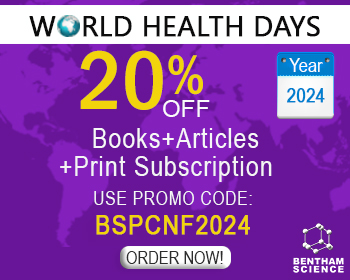Abstract
Background: Traditionally, the aerial parts of Rhamnus alaternus L. have been widely used in Mediterranean countries, including Morocco, to cure diabetes.
Aim: This study aimed to evaluate the antidiabetic effect of Rhamnus alaternus aqueous extract in streptozotocin(STZ)-induced diabetic rats.
Objective: This work aimed to evaluate the antihyperglycemic effect of Rhamnus alaternus aqueous extract (RAAE) in normal and diabetic rats. Then the phytochemical composition, antioxidant capacity, and potential toxicity of RAAE were also assessed.
Methods: The effects of acute (6 h) and subchronic (7 days) oral administration of RAAE (20 mg/kg) on blood glucose levels and lipid profiles were evaluated in normal and diabetic rats. Besides, a preliminary phytochemical screening, quantification of phenolic, flavonoid, and tannin contents as well as the antioxidant activity, using the DPPH method, were evaluated. Additionally, the toxicity of the aqueous extract (5 mg/kg) was also studied and the LD50 value was determined.
Results: RAAE (20 mg/kg) over 7 days of oral administration significantly decreased the blood glucose levels both in normal and diabetic rats. In diabetic rats, this extract also improved oral glucose tolerance. In addition, RAAE possessed significant antioxidant activity. According to preliminary phytochemical research, RAAE contains several chemical compounds, including alkaloids, polyphenols, flavonoids, cyanidins, anthraquinones, and sterols. On the other hand, the quantitative phytochemical study of the aqueous extract revealed a considerable amount of total phenolic compounds (497.93 ± 3.38 mg GAE/1g of RAAE), flavonoids (100.42 ± 0.32 mg RE/ g of RAAE), and tannins (14.32 ± 0.37 mg CE/1g of RAAE).
Conclusion: We conclude that RAAE exerts a significant antihyperglycemic effect in STZ-induced diabetic rats at a low dose. Indeed, more research is still required to support the use of this plant in the Moroccan population's diabetes care.
Keywords: Rhamnus alaternus L., antidiabetic, streptozotocin, antioxidant activity, phytochemical, oral glucose tolerance test, toxicity.
[http://dx.doi.org/10.1016/j.jep.2010.06.016] [PMID: 20600771]
[http://dx.doi.org/10.2337/diacare.27.5.1047] [PMID: 15111519]
[http://dx.doi.org/10.1016/j.fct.2009.07.038] [PMID: 19660513]
[http://dx.doi.org/10.3923/pjbs.2005.439.445]
[http://dx.doi.org/10.1016/j.actao.2009.02.003]
[http://dx.doi.org/10.1080/01480540701688725] [PMID: 18161508]
[http://dx.doi.org/10.1016/j.jep.2010.10.023] [PMID: 20965241]
[http://dx.doi.org/10.1016/j.jep.2005.12.035] [PMID: 16459038]
[http://dx.doi.org/10.1186/1746-4269-2-9] [PMID: 16457717]
[http://dx.doi.org/10.1007/BF03175089]
[http://dx.doi.org/10.1016/j.cbi.2008.04.006] [PMID: 18511029]
[http://dx.doi.org/10.1016/j.cbi.2007.04.002] [PMID: 17512922]
[http://dx.doi.org/10.1016/j.biopha.2018.02.106] [PMID: 29501772]
[http://dx.doi.org/10.1016/j.biochi.2004.09.005] [PMID: 15667942]
[http://dx.doi.org/10.1016/j.fct.2011.02.011] [PMID: 21338653]
[http://dx.doi.org/10.1016/j.indcrop.2015.06.015]
[PMID: 28925906]
[http://dx.doi.org/10.2174/2210315508666180327120434]
[http://dx.doi.org/10.1016/S0308-8146(02)00423-5]
[http://dx.doi.org/10.1002/jsfa.2740290908]
[http://dx.doi.org/10.1038/1811199a0]
[http://dx.doi.org/10.1007/s10298-015-0999-y]
[http://dx.doi.org/10.1016/j.biopha.2016.12.111] [PMID: 28061406]
[http://dx.doi.org/10.2174/1871525717666190121143934] [PMID: 30666919]
[http://dx.doi.org/10.1016/0378-8741(83)90037-5] [PMID: 6677820]
[http://dx.doi.org/10.1016/j.biochi.2011.08.005] [PMID: 21864646]
[http://dx.doi.org/10.1002/jbt.10058] [PMID: 12616644]
[http://dx.doi.org/10.1016/j.bbagen.2014.05.017] [PMID: 24905298]
[http://dx.doi.org/10.1016/j.indcrop.2019.112054]
[http://dx.doi.org/10.1186/s40816-021-00302-3]
[http://dx.doi.org/10.1155/2018/2731289] [PMID: 30116475]
[http://dx.doi.org/10.3892/mmr.2019.10320] [PMID: 31173182]
[http://dx.doi.org/10.2174/0929867324666171107103114] [PMID: 29110598]
[http://dx.doi.org/10.2174/1871529X18666180223100427] [PMID: 29473527]
[http://dx.doi.org/10.1186/s12944-018-0688-6] [PMID: 29592809]
[http://dx.doi.org/10.1155/2020/4020647] [PMID: 33123573]


























